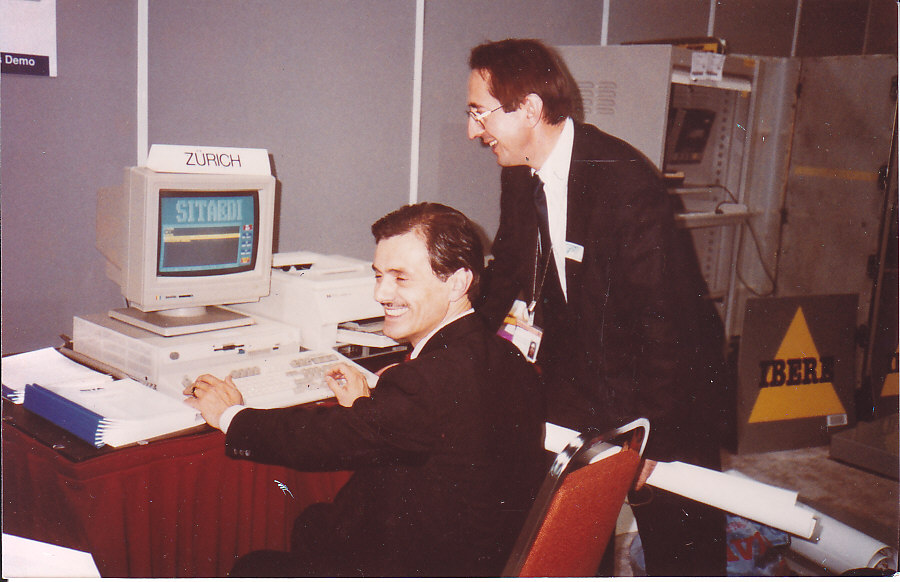The following photo, which is about the humble initial launch of a product named SITAEDI dates back to the early90’s. I have published it initially in the SITA group on Facebook and it has led to very interesting exchanges about the history and successful development of this product now still part of SITA portfolio of services for the airlines and aerospace industry. To start with, in the 90’s, I was part of the Corporate Trade Program team and developing business opportunities with new customers such as Postal Administrations and aeronautics and aerospace companies. EDI (which stands for Electronic Data Interchange) was much hyped at that time as the new solution which would revolutionize and facilitate business processes between companies and their providers, in this case airlines and aeronautic companies. This was part of SITA strategy to develop business in the so-called TRS, Transport Related Sector, and Paul Donnelly from the Marketing division then became in charge of this sector development . A specific standard, SPEC 2000 had been developped by the industry bodies to facilitate business exchanges between the airlines and aeronautical companies for the ordering of aircraft parts. My idea, which seems rather obvious now, was to implement the SPEC 2000 standard into SITATEX to automatically generate the various business messages to support these exchanges and therefore attract aeronautical companies to use SITA services. This small development was undertaken by the ATL team and the product, intially named SITAEDI, was launched, as shown on the photograph, without much fanfare at the occasion of an event in Zurich. On the photo we can see Fausto Gardini and myself preparing for this launch. This product quickly became a successful one, and as highlighted by Paul Donnelly, became the main business of the TRS sector. SITAEDI was soon after its launch rebranded as SKyform, a more appealing name, and continued its development, despite the limitation we had in creating Type B addresses for the aeronautical companies. The solution was to combine function codes (the two middle characters of a seven character Type B address) with specific company codes such as “7J”, or “XH” and “XD” for other sectors. Pierre-André Merlin who was involved in the support of the Sitatex product, was therefore also involved in the development of Skyform. Today SPEC 200 is still the standard for these exchanges, and as mentionned by Sean Melia, who has been Senior Product Specialist at SITA and responsible for SkyForm Online from 2011 to 2021, the the product became a web service and the addressing issue has been solved with the development of Type X which provides a gateway between the Type B world and the IP world.
A humble start followed by a beautiful and successful story! Thanks to all those who have contributed to it! We can see on the photograph Fausto Gardini and myself happily readying for the launch of SITAEDI. Indeed a good souvenir!

